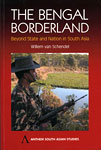The Bengal Borderland. Beyond State & Nation in South Asia

London, Anthem Press, 2004; ISBN 1-84331-145-3 (pb), ISBN 1-84331-144-5 (hc), 288 pp.
The Bengal Borderland constitutes the epicentre of the partition of British India. Yet while the forging of international borders between India, Pakistan, Bangladesh and Burma (the 'Bengal Borderland') has been a core theme in Partition studies, these crucial borderlands have, remarkably, been largely ignored by historians. While South Asia is
poorly represented in borderland studies, the study of South Asian borderlands appears indispensable because here a major and intensely contested experiment in twentieth-century border making took place.
Without direct reference to the borderlands as a historical reality it is not possible to understand how post-colonial societies in South Asia developed, the extent to which South Asian economies actually became bounded by borders, or the ways in which national identities became internalized. This groundbreaking new volume brings the border back in, to
inscribe the constantly shifting borderlands into the larger historiography of post-1947 South Asia. In examining this crucial region, Willem van Schendel closely examines this crucial region, tracing the new geographies thrown up by Partition, further reconfigured by over half a century of social, political and cultural negotiation and struggle, and
exploring how they have exerted an immense influence over the course of human events in South Asia. This book will interest historians, geographers, political scientists and economics, as well as South Asianists and migration experts, and will appeal to academics and students.
